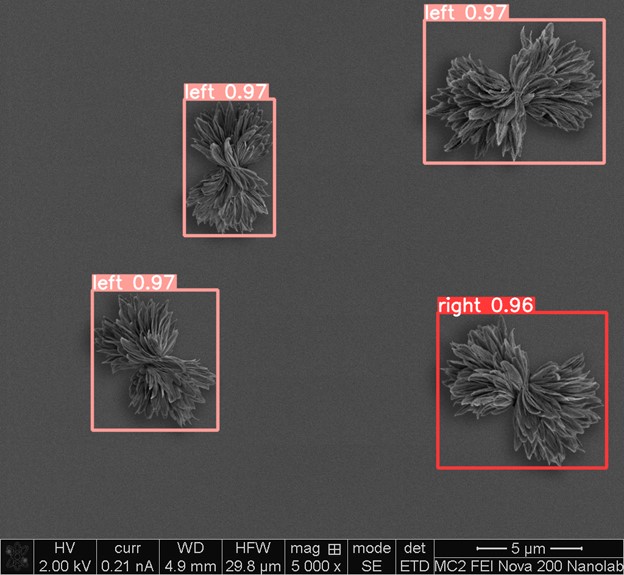(510a) Detection and Classification of Chiral Inorganic Particles in Electron Microscopy Images Using Generalizable Deep Learning Algorithms
AIChE Annual Meeting
2022
2022 Annual Meeting
Nanoscale Science and Engineering Forum
Nanoscale Science and Engineering Forum II (All Papers)
Wednesday, November 16, 2022 - 12:30pm to 12:49pm
Here we developed an approach for synthesizing large sets of realistic scanning electron microscopy (SEM) images of chiral microscale helices of bowtie shape based on very small original SEM image sets (~200 SEM images). We used SEM images of a diverse pool of bowties, which allowed the training of state-of-the-art neural network models with the ability to detect morphological properties of chiral structures of various sizes. We tested the method by generating 10,000 images of bowtie-shaped particles with different chirality and training the YOLOv5 model to differentiate between right and left structures. As a result, this algorithm can reliably identify and classify chiral bowtie-shaped particles with accuracy as high as 94.4%. Furthermore, after training on bowtie particles, this model can successfully recognize other chiral shapes with different geometries without re-training. These findings indicate that deep learning techniques can potentially replicate the visual analysis of chiral objects, which opens up a path to other computational methods capable of accurate automated analysis of a wide range of chiral features at different scales and their implementation in materials discovery for photonics and medicine.
